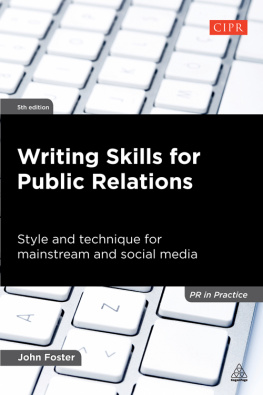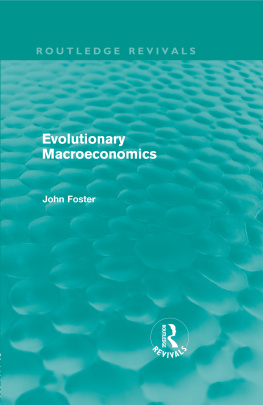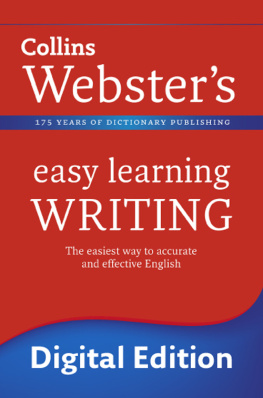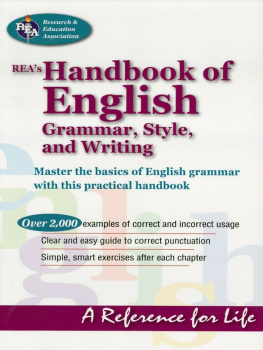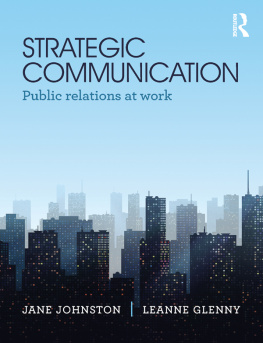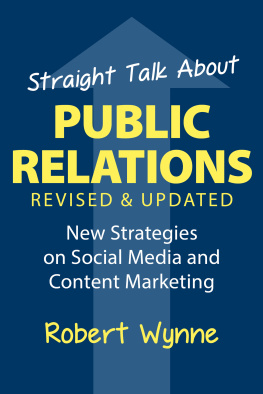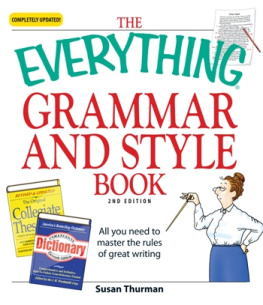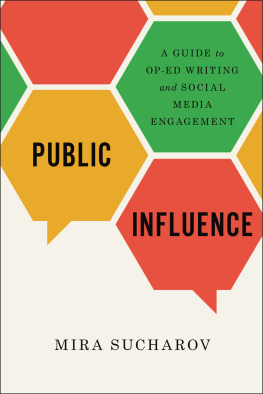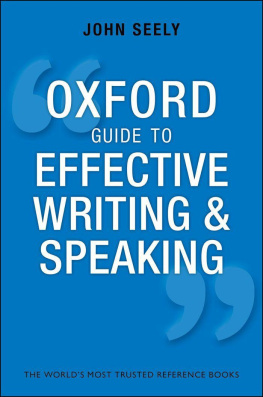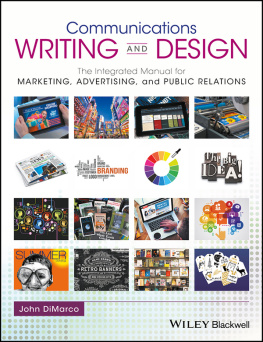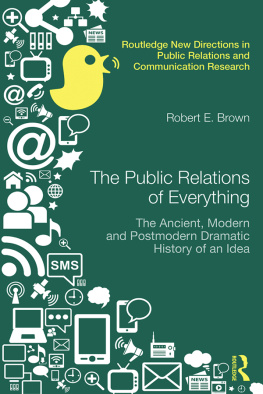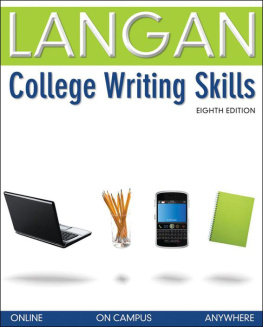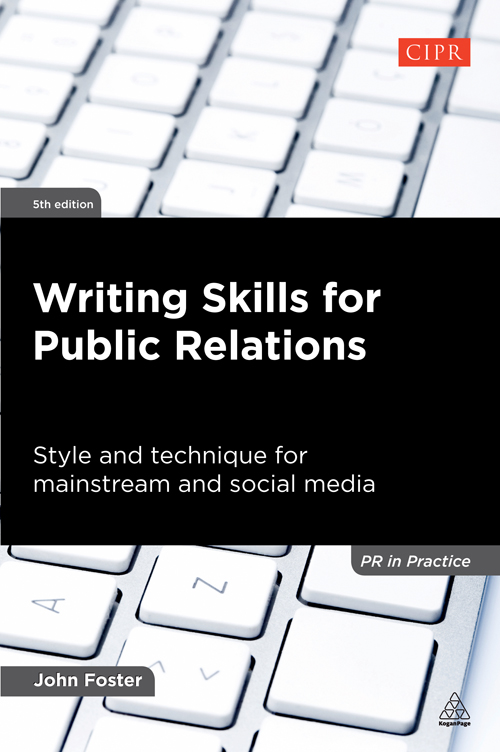Note on the Ebook Edition
For an optimal reading experience, please view large
tables and figures in landscape mode. |
This ebook published in 2012 by
Kogan Page Limited
120 Pentonville Road
London N1 9JN
UK
www.koganpage.com
John Foster 1998, 2001, 2005, 2008, 2012
E-ISBN 9780749465445
Contents
PR in Practice Series
Published in association with the Chartered Institute of Public Relations
Series Editor: Anne Gregory
Kogan Page has joined forces with the Chartered Institute of Public Relations to publish this unique series, which is designed specifically to meet the needs of the increasing numbers of people seeking to enter the public relations profession and the large band of existing PR professionals. Taking a practical, action-oriented approach, the books in the series concentrate on the day-to-day issues of public relations practice and management rather than academic history. They provide ideal primers for all those on CIPR, CAM and CIM courses or those taking NVQs in PR. For PR practitioners, they provide useful refreshers and ensure that their knowledge and skills are kept up to date.
Professor Anne Gregory PhD is Director of the Centre for Public Relations Studies at Leeds Metropolitan University, UK. She has authored over 70 publications, as well as being editor of the Kogan Page/CIPR series of books which she initiated, she is Editor-in-Chief of the Journal of Communication Management. Anne also leads specialist commercial research and consultancy projects from the Centre working with prestigious public and private sector clients. She is a non-executive director of Airedale NHS Foundation Trust. Originally a broadcast journalist, Anne spent 12 years as a senior practitioner before moving on to academia. She was President of the Chartered Institute of Public Relations (CIPR) in 2004, leading it to Chartered status and was awarded the CIPRs Sir Stephen Tallents Medal for her outstanding contribution to public relations in 2010. In May 2011 she was voted Chair-Elect of the Global Alliance of Public Relations and Communications Management, the umbrella organisation of over 60 public relations institutes from around the world.
Other titles in the series:
Creativity in Public Relations by Andy Green
Effective Internal Communication by Lyn Smith and Pamela Mounter
Effective Media Relations by Michael Bland, Alison Theaker and David Wragg
Effective Personal Communication Skills for Public Relations by Andy Green
Evaluating Public Relations by Tom Watson and Paul Noble
Managing Activism by Denise Deegan
Online Public Relations by David Phillips
Planning and Managing Public Relations Campaigns by Anne Gregory
Public Affairs in Practice by Stuart Thompson and Steve John
Public Relations: A practical guide to the basics by Philip Henslowe
Public Relations in Practice edited by Anne Gregory
Public Relations Strategy by Sandra Oliver
Risk Issues and Crisis Management in Public Relations by Michael Regester and Judy Larkin
Running a Public Relations Department by Mike Beard
The above titles are available from all good bookshops. To obtain further information, please go to the CIPR website ( www.cipr.co.uk/books ) or contact the publishers at the address below:
Kogan Page Ltd
120 Pentonville Road
London N1 9JN
Tel: 020 7278 0433 Fax: 020 7837 6348
www.koganpage.com
J ohn Foster spent several years in journalism with weekly trade papers, finally as assistant editor of a leading printing industry magazine and as editor of a quarterly journal on print production.
He subsequently held public relations posts with Pira International, the technology centre for the printing, paper, packaging and publishing industries, and with the Institute of Practitioners in Advertising (IPA), the industry body for UK advertising, media and marketing communications agencies.
He has written, edited and produced a variety of printwork, from house journals and books to posters, brochures and leaflets plus writing news releases, speeches, film scripts, slide presentations and exhibition panels. As a specialist freelance journalist, he has written on management and technical issues in the printing industry. He has also undertaken public relations projects in the field of healthcare.
A keen advocate of good, consistent style in the written and spoken word, John Foster contributed to the Last Word column in the CIPR magazine Profile and later in their digital newsletter The Conversation . He is a Fellow of the CIPR and holds the CAM Diploma in Public Relations. A member
of the Institute since 1954, he has served on the Council, Board of Management and Membership Committee, and was Programme Director 197981. He is an honorary member of the IPA, a member of the CAM Education Foundation, a Fellow of the Royal Society of Arts and a Senior Associate member of the Foreign Press Association.
In July 2003, John Foster was awarded the Stephen Tallents Medal by the then President of the CIPR, John Aspery, for his contribution and commitment to the effective use of the written word. The Tallents Medal, presented annually, recognises exceptional achievement in, and contribution to, the development of public relations practice by a member of the Institute.
John Foster welcomes comments on matters of style and communication, particularly those relating to the written and spoken word. He may be contacted by email on jonf@dircon.co.uk .
W riting good English must be one of the most difficult jobs in the world. The tracking of a developing language that is rich, diverse and constantly evolving in use and meaning is not an easy task. Todays rules and uses quickly become outdated, but this book captures English as it should be used now.
There have been many books on grammar and most of us, if we are honest, have to sneak the occasional look to check whether an apostrophe is in the right place or where a quote mark goes.
This book by John Foster gives invaluable advice, not only on the rules of English grammar, but on how to make the language come alive. How do you make people excited by your writing style and keep them reading on? How do you delight and surprise them, even if the topic is essentially dull?
Of course theres writing and theres writing. Writing for social media is very different from writing for the press. John takes us through the basics of style for all occasions, right down to pronunciation.
Also included in this fifth edition are three useful appendices: similar pairs of words that are often confused, a glossary and jargon buster of terms in IT, publishing and investor relations and some tips for when you are lost for words. There is also an excellent reading list at the end of the book. Particular attention has been given in this edition to social media and to internet-related subjects, for example what makes a good website and the writing skills needed in a digital age.
The book is written in a lively, imaginative style and is suited not only for the new practitioner who is eager to improve his or her mastery of the English language, but for the more experienced practitioner who needs a quick checklist of the essentials of grammar and some hints on how to pep up their writing style.
Writing Skills for Public Relations is intended to be a no-nonsense guide for busy practitioners. It avoids the traps of being so comprehensive and detailed that it confuses, or so superficial as to be of no use at all. It covers all the major grammatical constructions that we use day-to-day with the one objective in mind: writing good, readable English. Every PR practitioner should have one. Its potential readership extends to the wider reaches of the communications industry in fact to anyone interested in words and their usage.

